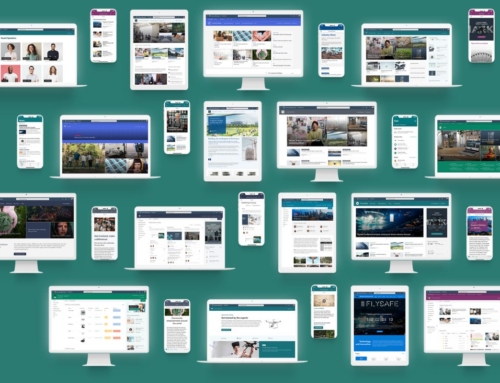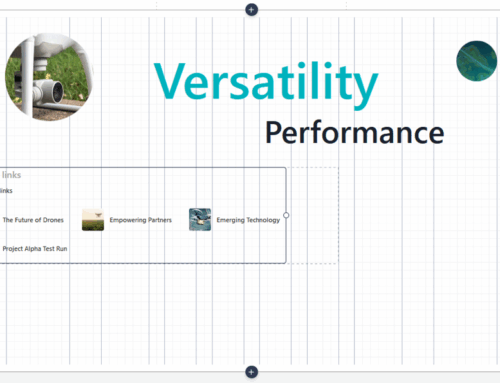Successful intranets have never been a byproduct of simply choosing a technology. Rather, a successful intranet is the direct result of good planning, partnership, choosing the right technology, and a continued improvement on what you’ve built.
Good Planning
Failing to plan is planning to fail – Alan Lakein
Years of experience building intranets on the SharePoint and Akumina platform have taught us that effective intranets never just happen. The most effective intranets we’ve helped build began with a concrete plan based on deep requirements analysis.
Those plans typically included a thorough understanding of what your organization is trying to achieve and at what scale. Consider that an intranet means different things to different organizations. For some, an intranet is simply a static web-based collection of documents or links. This can be effective if that is all your organization needs. For others, an effective intranet must be a platform that hosts daily active communication, provides access to static and dynamic content, serves as a platform to facilitate collaboration, and unifies vital cloud-based services to help employees get their jobs done.
Planning should incorporate some blue-sky thinking but ultimately the final requirements must be based on realistic expectations of what is achievable within your budget and required timeline. The plan must prioritize features and break them down into phases that can be tackled in manageable chunks. Trying to squeeze too much in the first phase or iteration of a project can easily send it off the rails.
Before you install anything, decide on the criteria by which you’ll measure success, and understand deeply what you are building, including the business processes driving your project. Don’t expect any technology to solve a problem you don’t truly understand or can’t quantify.
Partnership
I can do things you cannot, you can do things I cannot; together we can do great things. – Mother Teresa
Let’s face it, we all need experts in our lives. But hiring an expert doesn’t guarantee that a project will succeed or that you’ll get to where you need to go. It takes more than knowledge to succeed – it takes a strong partnership with the right expert.
While you want an expert with deep domain knowledge you are also looking for a person or team that employs a proven methodology. The right expert has a plan to understand your core problem and then works that plan to efficiently design and implement the optimal solution that meet your requirements and budget.
Transparent communication is key. Regardless of the project phase, it is critical that you have an expert that listens, asks clarifying questions, and validates all assumptions. No question or concern should be too small to address. You don’t want to find yourself in the situation where you’ve built the wrong solution because your problem or need was not well understood, or you started with invalid assumptions.
The right expert brings humility to the table. They know the limits of their expertise and are not afraid to share that openly. They never claim to know more than they do and instead manage expectations to minimize misunderstanding. With the right expert, you always know where you stand and what the plan is for moving forward.
Great partnership takes time to cultivate. Great partnership is based on trust. Finding the right expert can be challenging but you can minimize the risk by looking for a partner that has a proven plan and values communication, transparency, and humility. It is these characteristics that help establish trust over time to build the foundation of a great and lasting partnership.
The Right Technology
We are stuck with technology when what we really want is just stuff that works. – Douglas Adams
Technology is a tool to solve problems but not the solution itself. But how do you know what the right technology is? This goes back to your requirements.
Perfect Match or Close Enough?
You have developed a detailed set of requirements, and now you need to find a technology that matches those requirements perfectly, right? As you may have gathered, this will never be the case; no technology will ever satisfy all your requirements perfectly (no matter what the vendor tells you!). So, what should you do? Examine each potential technology and look for a technology that is close enough.
A technology that’s close enough is one that its core targets your type of problem and also satisfies a high percentage of your identified business requirements with out-of-the-box features. In other words, when searching for intranet solutions you start with industry-recognized intranet platforms and determine how closely each of these platforms matches your requirements.
If a technology fulfills 80% of your requirements, it is possible that the other 20% can be solved with a different method, a different process, or it may not be as crucial.
Do-It-Yourself (DIY)
You can also do it yourself by having in-house or third-party developers create the exact solution you are looking for. This could be the best solution if your business processes are so unique or provide a competitive advantage that no out-of-the-box solution can serve your needs. But keep in mind that any custom technology you build will need to be supported by your company, or a third-party vendor. This can make the price of a custom solution quite high and shift your focus away from your core business into the realm of software development.
Why Not Both?
We have found that a combination of both methods is usually the best fit. Choose a technology that matches most of your requirements and have some custom development that tailors it into a perfect fit. You’ll get the benefit of having a mostly off-the-shelf solution, with customizations to make it work the way you want.
Continual Improvement
If you want engagement, you must engage. – Karen Martin
Once you launch your intranet, the journey has just begun. As with any site on the internet, if it is not delivering something people find relevant, valuable, or appreciate, people will likely never return. The same is true for your intranet.
Because you’ve engaged in proper planning, your intranet should hit many of its intended marks. But experience tells us that there is always room for improvement and growth. As you monitor and invite feedback from your users, you’ll gain a deeper understanding of your audience and discover new and better ways to serve them and keep them engaged. You’ll discover that certain content appeals more than others, you’ll find that users want and welcome new features to help them get their jobs done.
From this point forward, your job is to plan, prioritize, and build new content and features to keep your organization engaged.
Start Today
If you need assistance planning and choosing the right technology for your intranet we can help! Our team has experience and expertise you need to ensure your intranet project is a success. Let Compass365 partner with you today and let’s build an intranet together that your employees will love and rely on every day.









